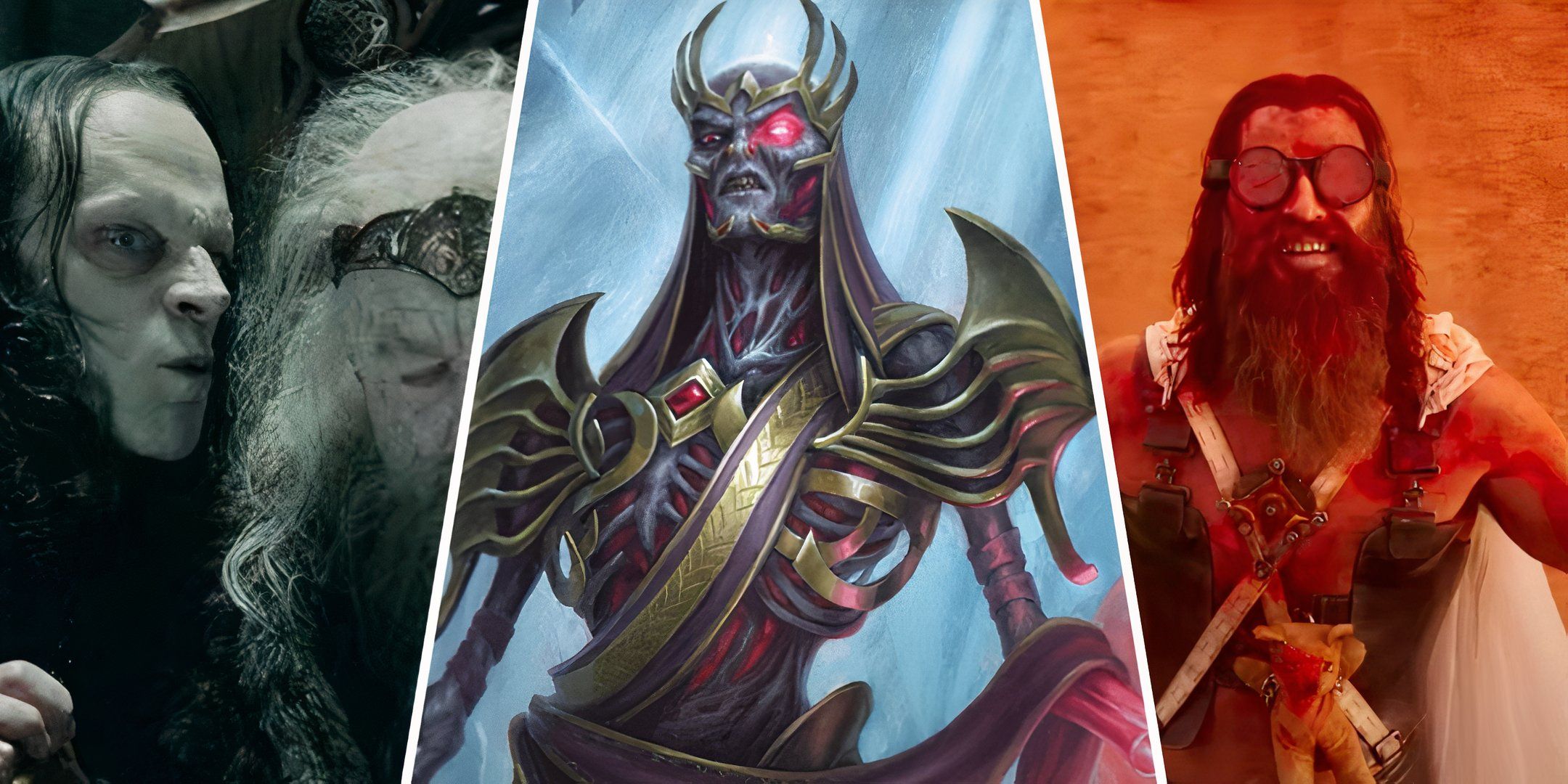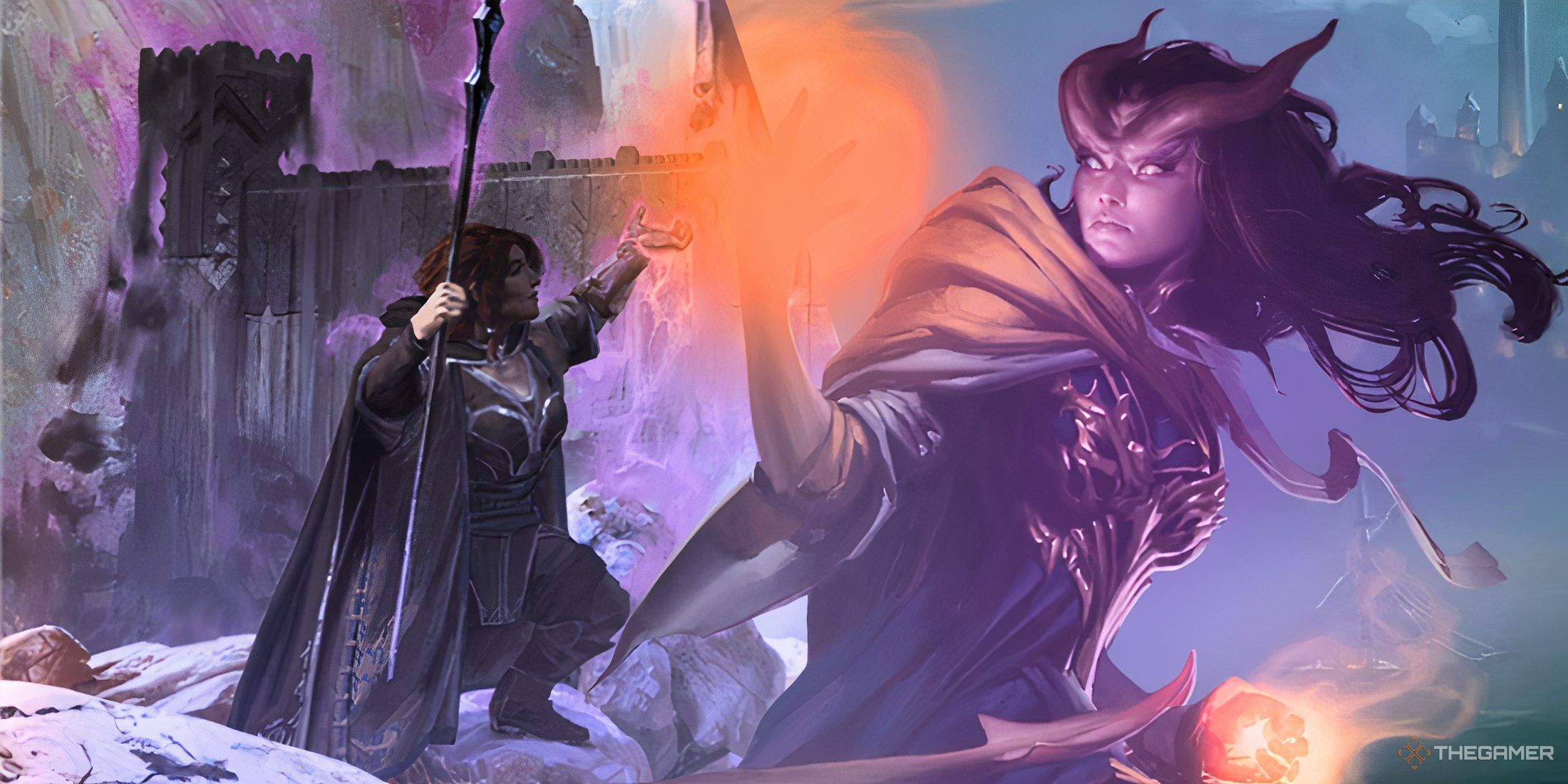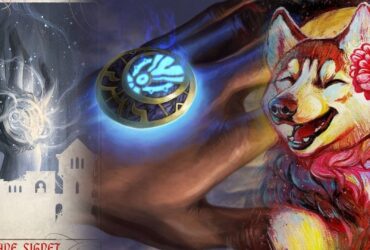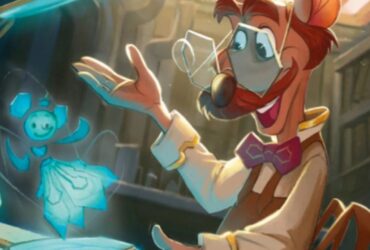When it comes to being a Dungeon Master, few things are more fun in Dungeons & Dragons than getting to play the villain. It’s a chance to give your players a fun figure to rally against. A hero is largely defined by the villains they defeat, after all.

Related
Dungeons & Dragons: 10 Ways To Introduce A Villain To The Party
They’ll leave a lasting impression on your party.
It can be surprisingly difficult to make a compelling villain for low-level play though. Making a powerful dark lord isn’t so hard, but someone who is both a challenge to low-level characters but still dangerous enough that they feel like a bigger threat can be tricky. We’ve put together some examples you can use in your game, or take as a starting point for your own creations.
Updated on November 22, 2024 by Jonathan Eakin: We’ve added a few more villains, as you can never have enough options to create the best BBEG possible for every campaign. With four more options to choose from for several different campaign types, check out even more villains to add to your campaign.
12 The Activist
For The Cause
Some of the best villains are the ones with a cause your players and their characters can see the value of, but whose methods are so extreme that they have to be stopped. Ecological activists are especially good for this, Poison Ivy is a classic example from comics.
A druid who feels civilization has encroached too far on nature may take violent action to restore balance, or someone seeking to steal from the rich for the poor could go too far. Sometimes a villain is a hero with a faulty conscience.
11 The Hero
Justice Served
Every Dungeon Master knows that their party of adventurers has done some less than heroic deeds at some point or another. This is usually done for the sake of laughs at the table, but if you like enforcing consequences on your players then your next villain might be a hero.
A noble knight who has heard tale of some of your parties lapses in judgment could hunt them down to enact justice, and be completely in the right to do so. This a great way to turn the tables on your players and make them question the course of their character arcs.
10 The Pawn
Unwilling Or Unwitting
Not every villain is a willing participant in villainy, or even aware that what they’re doing could be considered evil. Playing with the ideas of a character controlled, either magically or through manipulation, can be a great way to make your characters try to find non-violent solutions.
This is also a classic way to set up your next villain, the one behind the actions of the first. Chaining your villains together like this, so long as it doesn’t go on too long, can help your campaign feel less like a series of one-shot adventures and more like a connected story.
9 The Cursed
Whatever It Takes
Characters who feel driven to the edge are often capable of acts of desperation, making for the perfect villain. Someone cursed to an ill fate might do whatever they can to escape it, throwing their morality to the side.

Related
Dungeons & Dragons: 9 Halloween Themed Items To Treat Your Players With
The one time of year you can dress up in even sillier costumes.
Whether your players decide to stop them with violence or help them escape their doom as a way to remove their motivation for evil will be up to them, but is also a question of how you as a DM choose to frame the situation.
8 The Cultist
Bad Religion
The cultist in service to fiends or dark gods is a classic, and with good reason. They’re easy to portray as clearly evil with dark rites and acts of human sacrifice, and they’re perfect for low-level play since they’re usually not all that strong themselves.
The threat of a cult completing a ritual to empower themselves or summon an avatar of their deity is plenty of reason enough for your players to want to stop them, especially if given the quest by their own gods.
Cultists offer a great progression from low-level to mid-level play. Your players can always discover that the cult is larger than they thought, forced to deal with increasingly powerful members of the cult as they level up.
7 The Bandit
Anything For Gold
Motivations for villains can be a tough thing to get right. Too grand and they don’t feel relatable, too simple and they’re not believable. Greed is a simple solution to that problem, and it’s up to your players to decide whether crime pays or not.
Any lawbreaker out to line their pockets would work, whether it’s highwaymen or the thieves guild of a city. Just make sure you make them suitably despicable, if you veer too far in the direction of Robin Hood your players are more likely to sign up than put a stop to their wicked ways.
6 The Bard
The Court Of Public Opinion
Not every villain your party faces has to be one they end up fighting, Spider-Man doesn’t usually brawl with J. Jonah Jameson after all. A bard who keeps spreading tall tales that cast your player’s characters in a bad light can create a truly memorable antagonist.

Related
Dungeons & Dragons: 10 Archetypes That Make Great Villains
These archetypes are perfect for villains in your D&D campaign.
This works especially well if your party includes a Bard, giving them the perfect rival to trade insults with. A villain who twists the reputation of the party is a tough one to defeat, since any jump to violence from your players will only feed into the bad press.
5 The Apprentice
Stay In School Kids
Finding a villain appropriate for a low-level party sometimes means letting them know they’re not up against someone at the height of their power. Having them deal with a known apprentice, flunky or underling can be a good way to do this.
A wizard ally of the party might ask them to deal with their apprentice who ran off with forbidden texts, or your players might encounter a necromancer who openly admits to being the apprentice of someone more powerful.
4 The Hag
Witches Get It Done
D&D has a wide variety of hags and witches available to choose from, and most of them are of a relatively low challenge rating. They’ll make a suitably sinister low-level threat for your players to contend with, and the aesthetics are impeccable.

Related
Dungeons & Dragons: 8 Unusual Fey To Shock Your Players With
Not all fey have cute little butterfly wings.
If you and your players enjoy it and you’re looking for a way to keep it relevant as they advance in levels, you can easily introduce that first witches coven as the next threat as they seek revenge for their fallen sister.
3 The King
Power Corrupts
The evil king is a fantasy trope that deserves the amount of usage it sees, toppling a wicked ruler is one of the most satisfying arcs your players can experience. A king might seem like something for higher levels, but this villain scales to whatever level you need.
A king doesn’t have to be a king, any person in a position of power can allow for roughly the same arc to play out. A local baron, a guard captain, a cruel ship captain, and any other person who abuses their position will fit the bill.
2 The Serial Killer
A Classic Slasher
Hopefully, your players won’t face a moral dilemma about whether to put a stop to a serial killer or not. Unlike some other possibilities for villains, a serial killer usually doesn’t have much motivation beyond the fact that they like what they do.
This is perfect if you want to provide your players with a mystery to solve and crime scenes to investigate, racing against the clock to catch the killer before they strike again. Give the killer some sort of magical ability, both to make the crimes feel like part of a fantasy world and to give them an edge when it’s time for combat.
1 The Rival Party
They’re Like You But Worse
Nothing will rile your players up like a rival adventuring party who always manages to beat them to the treasure, or who takes credit for the accomplishments of your players. To nudge them from antagonists to villains, make it clear that they take the jobs your party never would.
A group of ruthless mercenaries who always get the job done no matter what, or an evil group masquerading as noble heroes to take advantage of public goodwill are two ideas to help get you started. Fill the group out with members who are equivalent to your player’s characters for extra effect. If your party has a former member of the navy then the other party should have a former pirate, and so on.
Source link
























Leave a Reply